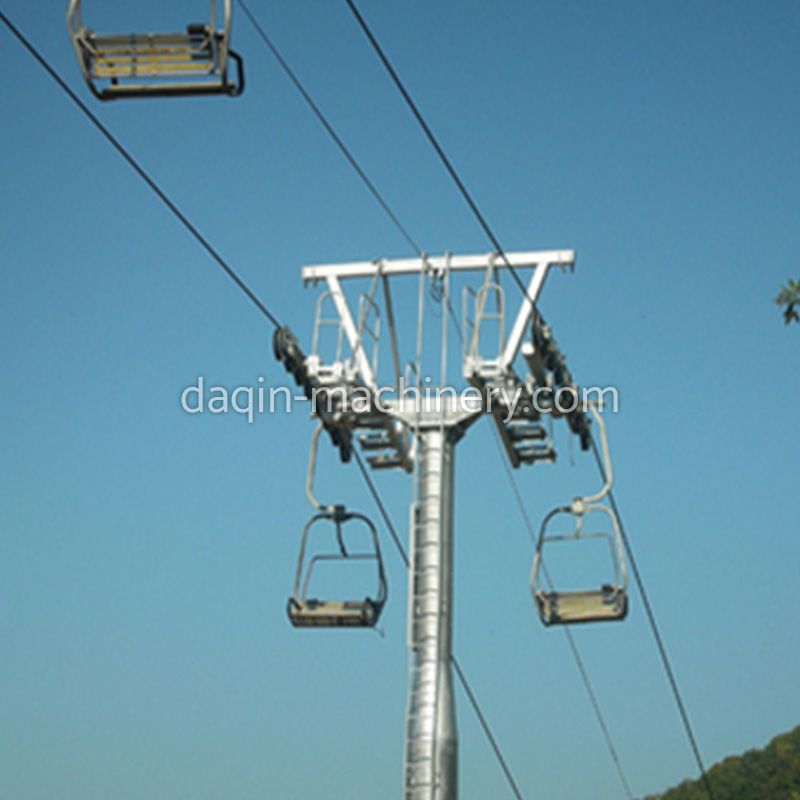How does a fixed grip chairlift work?
Fixed-grip chairlifts are a common sight at ski resorts and other recreational areas with a need for efficient uphill transportation. They serve as an integral part of the infrastructure, providing skiers, snowboarders, and outdoor enthusiasts a means to access the slopes and trails. Understanding how these chairlifts work can provide valuable insight into their design and operation.
Basic Structure and Components:
A fixed-grip chairlift is a mechanical device designed to transport passengers from the base of a ski resort to various points on the mountain. The basic structure consists of several key components, each playing a specific role in the system's operation:
Chairlift Towers: These are the tall structures that support the cables and the chairs. They are strategically placed along the chairlift's route and provide stability and elevation.
Support Cables: The support cables are tensioned between the towers. The chairs are suspended from these cables, and they move along with them.
Chairs: Passengers sit in chairs, which are fixed to the cables and move continuously, carrying riders up the mountain.
Bullwheels and Drive Equipment: At the base and top terminals, large bullwheels provide a mechanism for the support cables to loop around, creating a continuous loop. The drive equipment at the base of the lift powers the system, keeping the cables moving.

Chairlift Operation:
The operation of a fixed-grip chairlift can be broken down into several key steps:
Loading Zone: Passengers queue up in a designated loading area at the base of the chairlift. Chairs are continuously moving along the cable loop, and they slow down as they approach the loading area. Skilled lift operators help passengers onto the chairs, which are designed to be low to the ground to facilitate easy loading.
Cable Loop: The Fixed Grip Chairlift operates on a continuous cable loop. As the chairs leave the loading area, they move uphill supported by the tensioned support cables. The chairs are attached to the cables using fixed grips, hence the name of the lift.
Transporting Passengers: Passengers enjoy a scenic ride as the chairlift transports them up the mountain. The chairs are spaced at regular intervals to maintain a consistent speed and ensure that passengers can load and unload safely.
Unloading Zone: At the top terminal, there is an unloading zone where passengers prepare to disembark. The chairs slow down as they approach this area, making it easier for riders to dismount. The unloading area is often equipped with a gentle incline to assist passengers in getting off the chair smoothly.
Return to Base: After passengers have unloaded at the top terminal, the chairs continue their journey, empty, back to the base of the lift. The chairs pass through a return station or bullwheel before returning to the loading area.
Safety and Maintenance:
Safety is of paramount importance in chairlift operation. Lift operators receive training to ensure the safety of passengers during loading and unloading. Additionally, regular inspections and maintenance are conducted to ensure the chairlift's mechanical components are in good working order.
Safety features, such as emergency stops and communication systems, are integrated into chairlifts to handle unexpected situations. In the event of a malfunction, the lift can be stopped immediately, ensuring the safety of passengers.
Environmental Considerations:
Chairlifts, like many other forms of transportation, have environmental impacts. Some ski resorts have taken steps to mitigate these impacts by using energy-efficient drive systems, implementing recycling programs, and minimizing the environmental footprint of chairlift construction and operation.
Conclusion:
Fixed-grip chairlifts are a familiar and essential part of ski resorts and recreational areas worldwide. They provide an efficient means of transporting visitors to higher elevations, where they can access slopes, trails, and outdoor activities. Understanding the components and operation of these aerial ropeway chairlifts not only enhances the overall experience of outdoor enthusiasts but also highlights the careful planning and engineering that go into creating safe and reliable transportation systems in mountainous terrain.




